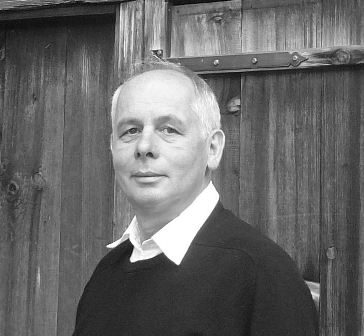
Born in Berlin, Max earned his Diploma in Physics in 1973 from Humboldt University of Berlin (HUB, East Germany, GDR), with a thesis on low-energy heavy-ion physics. He received his PhD in 1977 from the Institute for High Energy Physics (IHEP) of the Academy of Sciences of the GDR in Zeuthen (now part of DESY) on the subject of multiparticle production, and his “habilitation” degree in 1984 from HUB.
From 1973 to 1991, he conducted research at IHEP Zeuthen, spending several years from 1977 at the Joint Institute for Nuclear Research (JINR) in Dubna, and from the 1980s at DESY and CERN. He was awarded the Max von Laue Medal by the Academy of Sciences of the GDR in 1985 for his role in determining the asymmetric interaction of polarised positive and negative muons with the NA4 muon spectrometer at CERN’s SPS M2 muon beam.
Max worked at DESY from 1992 to 2006. As a member of the H1 experiment at the lepton–proton collider HERA from 1985, his research focused on investigating the internal structure of protons using deep inelastic scattering, and he served as H1 spokesperson from 2002 to 2006.
He became a Professor in the Department of Physics at the University of Liverpool in 2006 and joined the ATLAS collaboration in 2007. Within ATLAS, he made key contributions to data analysis, notably on the high-precision 7 TeV inclusive W and Z boson production cross sections and associated properties. He led the Liverpool ATLAS team for eight years, from 2009 to 2017. Under his guidance, the 30-strong group contributed to the maintenance of the SCT detector, as well as to ATLAS data preparation, precision SM measurements, Higgs physics studies, new physics searches and more. His contributions to understanding the proton structure using deep-inelastic scattering led to the award of the Max Born Prize by the Deutsche Physikalische Gesellschaft (DPG) and the Institute of Physics (IOP) in 2013.
Max had a unique ability to form collaborations, bringing together people from different backgrounds to work towards a common goal. From 2008 to 2022, he led the LHeC study, an electron beam upgrade of the LHC. Following the Higgs boson discovery in 2012, the CERN Management gave him the official mandate to develop this study and included LHeC in the European Strategy of Particle Physics discussions and as an integral part of the FCC study. Max was also a strong advocate for developing energy recovery linear (ERL) accelerators and was influential in the development of the PERLE ERL demonstrator accelerator at IJCLab, for which he acted as spokesperson up to 2023.
Besides being a distinguished scientist, he was a man of unwavering principles, grounded in his selfless interactions with others and his deep sense of humanity. His visions were rooted in realism. Drawing from his experience as a bridge between East and West, he was a strong advocate for international scientific collaboration and the responsibility of scientists toward their societies.
The many of us who were fortunate enough to have worked alongside Max over the years know how profound his knowledge of physics was and how dedicated he was to experimental particle physics. We admired his ability to mentor and support students, postdocs and early-career researchers, as well as his wise and calm approach to solving problems. Throughout his long and exceptional career, Max worked with passion on theory, detectors, accelerators and data analysis.
Max’s passing is a profound loss for ATLAS and the entire high-energy physics community, but his legacy will endure. Our deepest condolences go to his family, especially to his beloved wife and our close colleague, Uta.
His friends and colleagues
